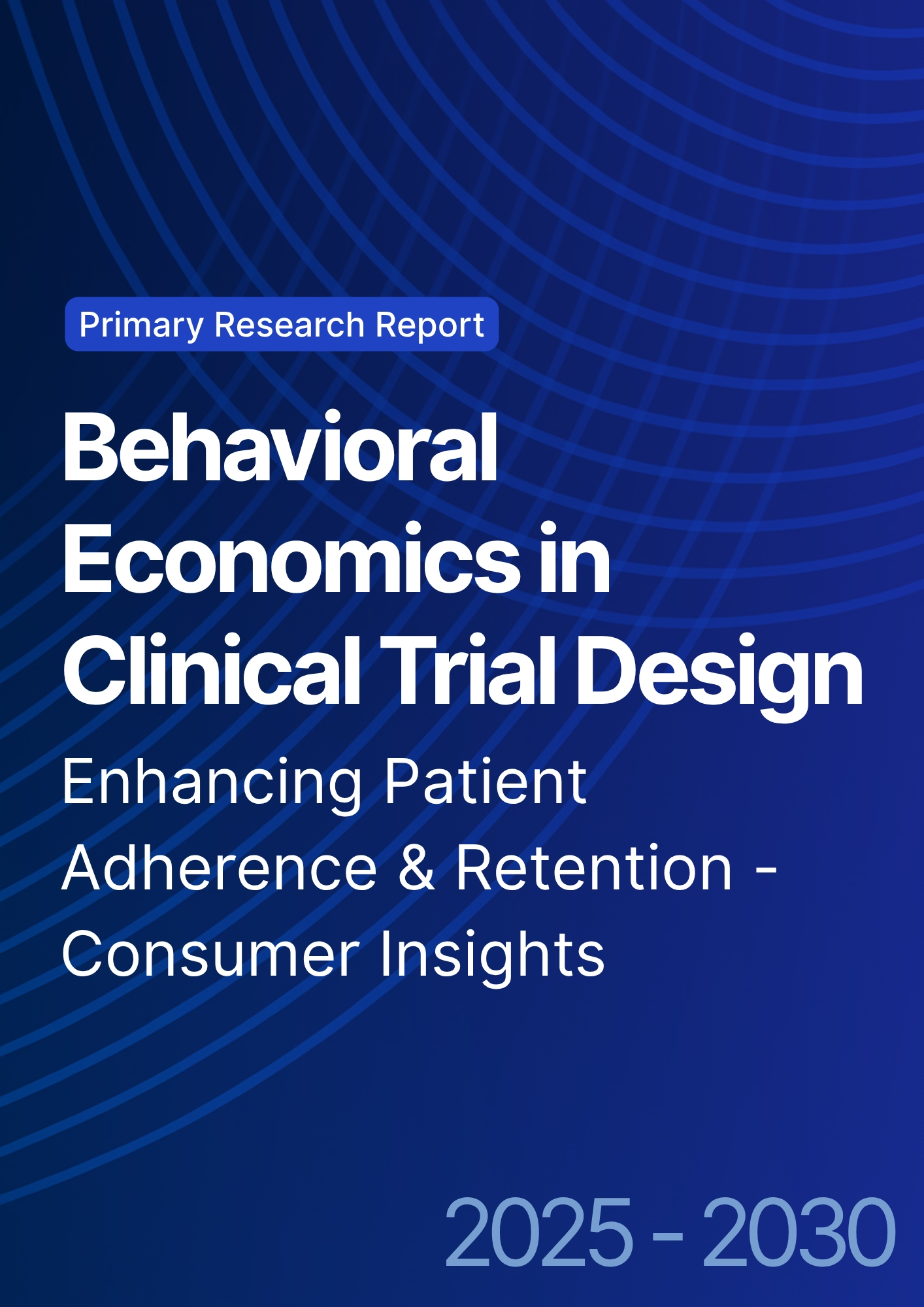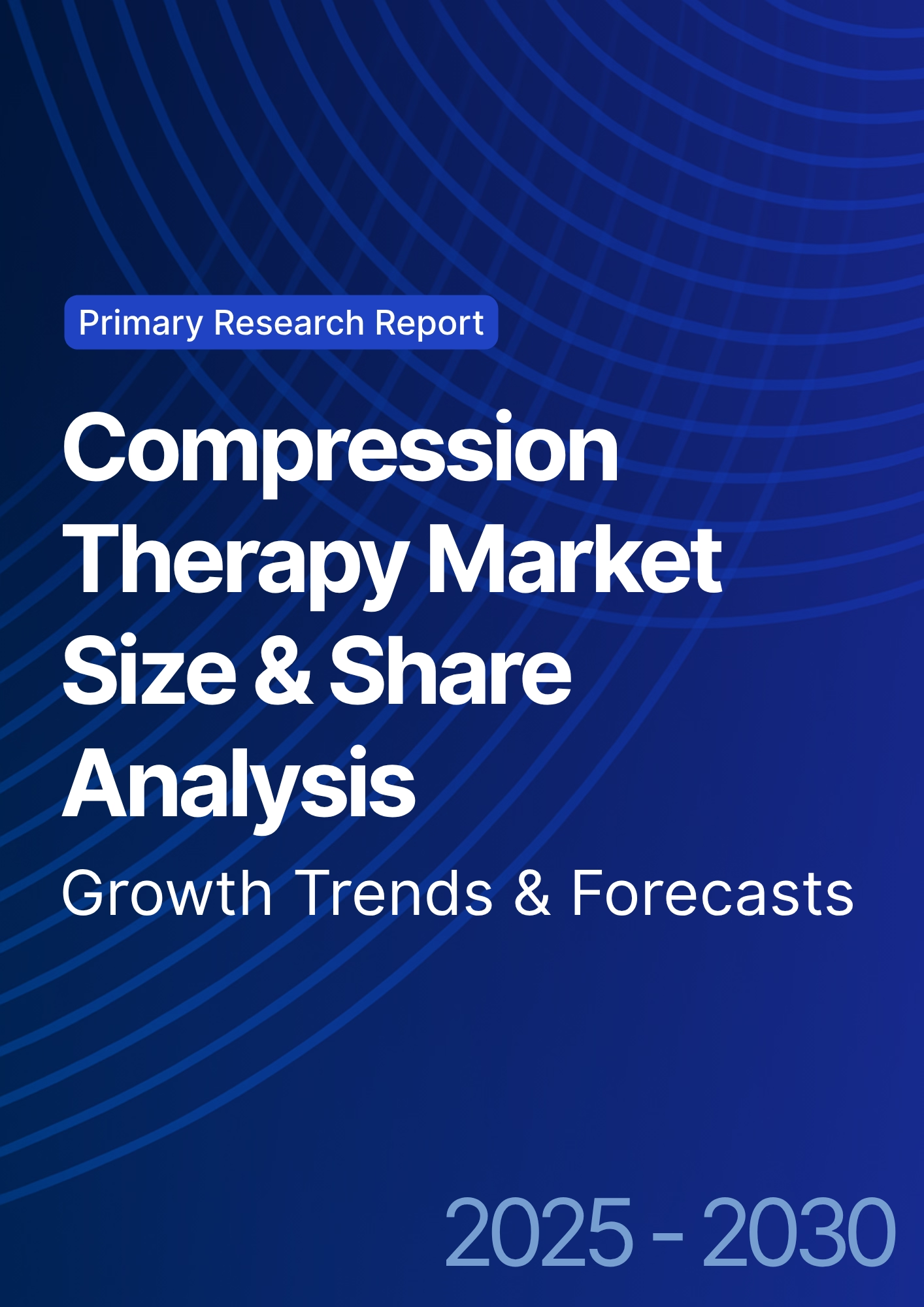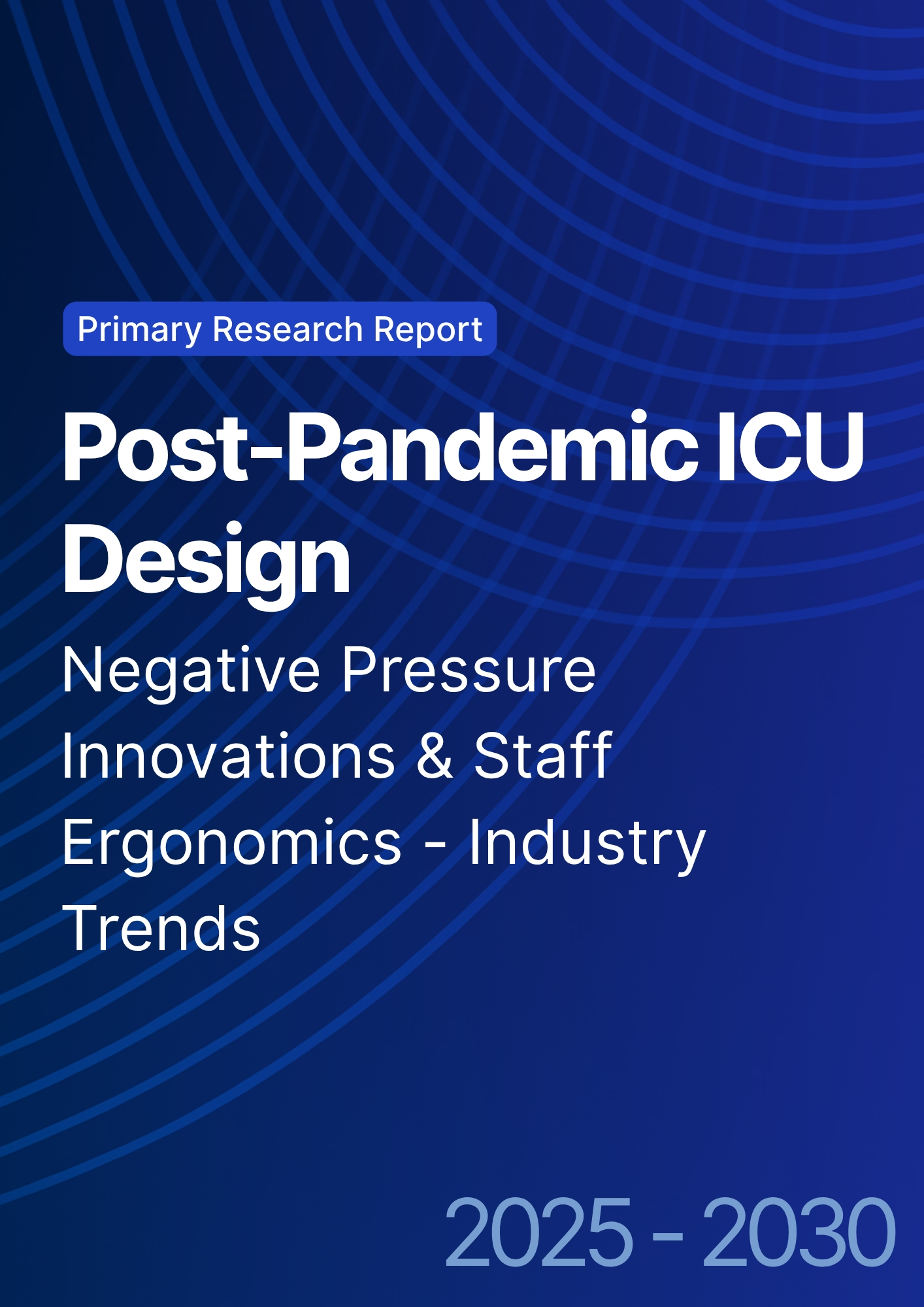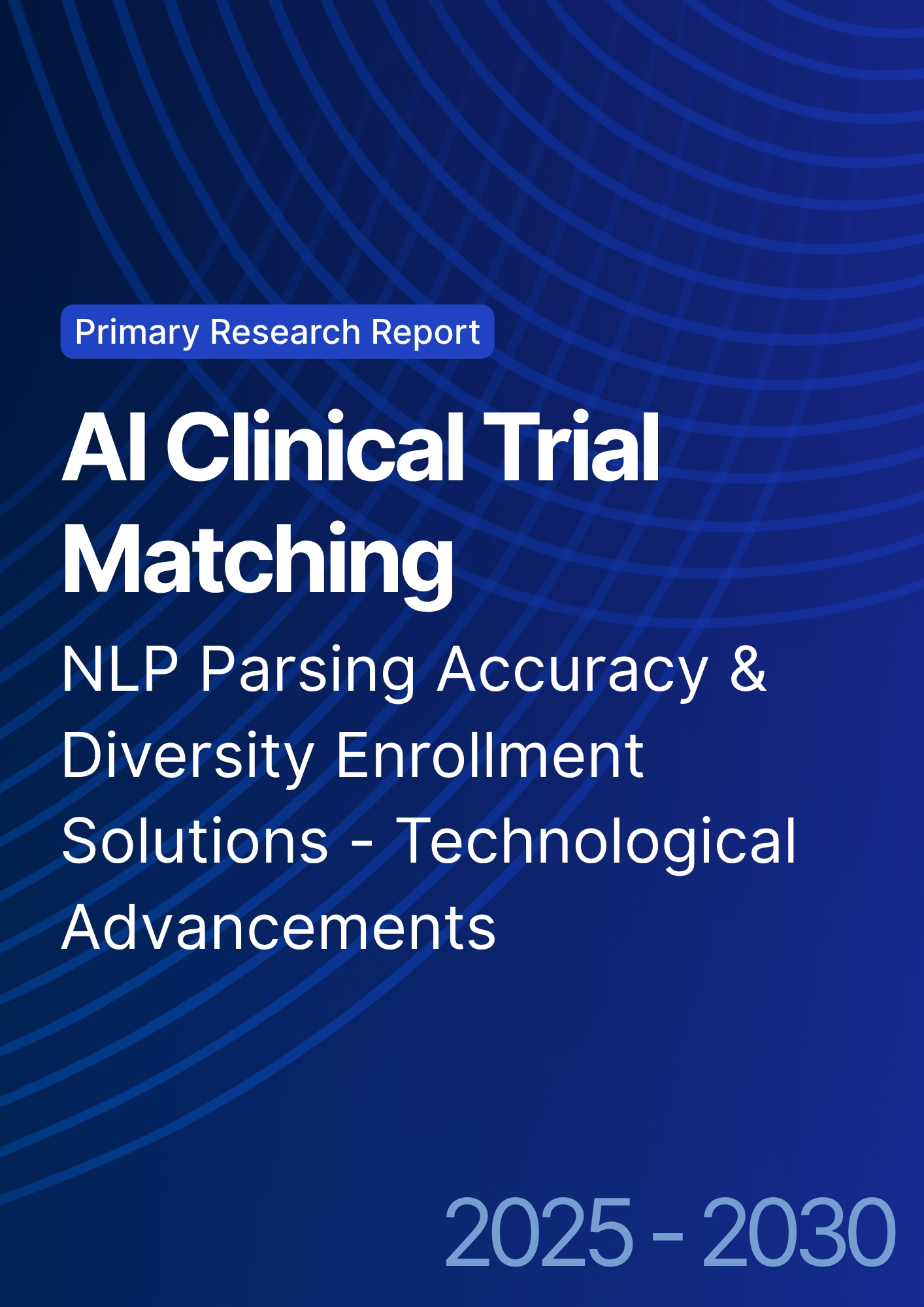

68 Circular Road, #02-01 049422, Singapore
Revenue Tower, Scbd, Jakarta 12190, Indonesia
4th Floor, Pinnacle Business Park, Andheri East, Mumbai, 400093
Cinnabar Hills, Embassy Golf Links Business Park, Bengaluru, Karnataka 560071
Connect With Us
Behavioral Economics in Clinical Trial Design: Enhancing Patient Adherence & Retention - Consumer Insights
The report explores the rising impact of behavioral economics (BE) tools in clinical trial design, driving significant improvements in patient adherence, retention, and data completeness especially in North America. By 2030, BE engagement solutions help lift adherence by 22 percentage points, retention by 17 points, and reduce dropouts by 30%, directly boosting trial success rates and lowering per-participant costs. Integrated software platforms and services now deliver targeted nudges, incentives, and social prompts, with the market set to grow from $1.1B to $3.2B, as BE becomes a portfolio standard among large sponsors, biotechs, and academic groups.

What's Covered?
Report Summary
Key Takeaways
- NA spend on BE-driven patient engagement grows $1.1B (2025) → $3.2B (2030); CAGR 23%.
- Visit/medication adherence rises +22 percentage points (pp) on average.
- Retention to last visit improves +17 pp; dropouts −30%.
- Protocol deviations fall −20% via defaults, reminders, and simplified task flows.
- Time-to-enroll shortens −25%; time-to-complete shortens −16%.
- ePRO/eCOA completion increases +35%; missing data days −28%.
- DCT/hybrid adoption reaches 65% of NA trials by 2030 (from 38% in 2025).
- Diversity representation (race/ethnicity, rural, older adults) improves +25% with targeted incentives and community partners.
- Cost per retained participant declines −18%; per-protocol dataset yield +14%.
- ROI for BE toolsets: 20–26% by 2030, higher in long, high-burden trials.
Key Metrics
Market Size & Share
North American spend on behavioral-economics (BE) patient-engagement solutions in clinical trials is projected to rise from $1.1B in 2025 to $3.2B by 2030 (CAGR 23%), driven by measurable effects on adherence, retention, and data completeness. The United States will account for ~84% of regional spend, with Canada and the rest of North America contributing ~16% as national research networks scale hybrid and decentralized protocols. Sponsors redirect budget from traditional reminder systems to BE-optimized nudges that embed defaults (pre-scheduled visits), clear next-best-action prompts, social proof messages, and loss-aversion framed milestones. Trials adopting BE packages demonstrate average adherence lift of +22 pp (e.g., 68%→90%), retention +17 pp (70%→87%), and dropouts −30% (20%→14%), which compounds into per-protocol dataset yield +14% by reducing missing visits and rescreens. ePRO/eCOA completion +35% and missing-data days −28% improve statistical power, allowing sample-size reductions of 6–10% in some designs. The market divides into software (62% of spend)—engagement platforms, incentive wallets, rule engines—and services (38%)—site training, BE design, and analytics. By therapeutic area, metabolic/CV (25%), oncology (22%), CNS (18%), respiratory (10%), and others (25%) lead adoption, reflecting high visit burden and longer durations where adherence delta monetizes quickly. As DCT penetration reaches 65% of trials by 2030 (from 38% in 2025), BE toolsets become standard inclusions in RFPs, with bundled pricing tied to retention SLAs.
.png)
Market Analysis
Effect sizes cluster around three BE levers. (1) Frictions minimized: Defaults (auto-scheduled tele-visits), one-tap confirmations, pre-filled transport vouchers, and childcare micro-grants cut no-show rates −24% and protocol deviations −20%. (2) Motivation amplified: Milestone incentives (€/$10–$40 equivalents per critical visit), lottery overlays (e.g., 1 in 50 chance at $250 when all week’s tasks completed), and loss-aversion framing (“don’t lose this week’s streak bonus”) produce a +22 pp adherence lift and +17 pp retention across pooled indications. (3) Salience increased: Social-proof and clinician-endorsed nudges (e.g., “8 of 10 participants completed this step”) improve ePRO completion +35%. Operationally, these changes compress time-to-enroll −25% via lower screen failures and faster re-contacts, and time-to-complete −16% by reducing missed windows and re-scheduling churn. Financially, cost per retained participant −18% emerges from fewer re-screens (−21%), lower courier/onsite costs (−12%), and reduced overage in recruitment media (−15%). Diversity representation +25% is achieved by localized incentives (evening visits, community-site hours, caregiver stipends) and multilingual prompts. Risk is mitigated through IRB-approved messaging libraries, dynamic consent, and auditable nudge logs. By 2030, 70% of large sponsors and 55% of mid-biotechs make BE a protocol-embedded standard, shifting from pilots to portfolio-wide frameworks with adaptive A/B testing that retires underperforming nudges in ≤6 weeks.
Trends & Insights
Five trends shape 2025–2030. 1) BE-native DCTs: As DCT/hybrid rises to 65% of NA trials, BE becomes the default engagement layer: visit defaults, geo-triggered reminders, and micro-reimbursements tied to verified completions. 2) Precision nudging: Segmentation by burden profile, digital literacy, language, and socioeconomic factors enables +22 pp adherence with lower incentive spend (−12% per participant) by targeting the right lever per cohort. 3) Incentive economics: Blended models—small guaranteed amounts + lottery multipliers—raise engagement 8–10 pp above flat payments at equal budgets, while streak bonuses reduce missed tasks −19%. 4) Data completeness as currency: ePRO/eCOA +35%, missing-data −28%, and deviation −20% improve power, shortening timelines or reducing sample sizes (6–10% fewer participants) without compromising endpoints. 5) Equity-by-design: Community partner messaging and flexible time windows lift rural and older-adult retention +14–18 pp, driving diversity +25%. Compliance matures: 100% IRB templating, opt-out options in every message, and transparent value exchange (“we cover transport/childcare to respect your time”). Tooling integrates with EHR/eConsent and site calendars, auto-resolving conflicts and providing next-best-action to coordinators. By 2030, success is benchmarked on retention to last visit ≥85%, adherence ≥90% in high-burden protocols, and participant NPS ≥60, with ROI 20–26% from faster, cleaner data.
.png)
Segment Analysis
By trial model: Hybrid captures 44% of BE spend (balance of onsite and virtual tasks), DCT 21% (heavy remote operations), and site-based 35% (BE used to de-friction in-person visits). By sponsor type: Large pharma 58% share (portfolio standardization), mid-biotech 27% (program-selective), academic/consortia 15% (grant-backed pilots). By therapeutic area: Oncology 22% (complex schedules), CNS 18% (cognitive/behavioral supports), metabolic/CV 25% (long durations), respiratory 10%, other 25%. Tool categories & effects (pooled medians):
• Defaults & scheduling bots: missed-visit −23%, deviations −18%.
• Incentive wallets (fixed+lottery+streak): adherence +20–26 pp, retention +14–19 pp.
• Social proof/clinician prompts: ePRO +28–38%.
• Barrier busters (transport/childcare/paid time windows): rural/low-income retention +12–16 pp.
Economics vary by burden: high-burden Phase III oncology sees cost/retained −22% and time-to-complete −12%; metabolic disease programs capture sample-size savings 6–8% via higher data completeness. Sites report coordinator time −15% per participant after 90 days of BE routine. By 2030, >70% of implemented programs include A/B test plans, retiring underperforming nudges after 4–6 weeks and re-allocating incentive budgets to top-decile tactics.
Geography Analysis
The U.S. represents ~82% of NA BE adoption/spend by 2030 (from ~80% in 2025), with Canada ~14% and rest of NA ~4%. U.S. growth is propelled by larger sponsor pipelines, broader DCT acceptance, and dense site networks. Adherence lift averages +23 pp in the U.S. vs +20 pp in Canada, reflecting higher baseline digital engagement but also greater visit burden. Retention +17–18 pp is consistent across both, while dropouts −30% (U.S.) vs −27% (Canada). Rural strategies (mobile clinics, fuel/transport micro-grants, evening tele-visits) lift rural retention +15 pp and diversity +25% region-wide. ePRO completion +35% holds in both markets; Canada shows slightly higher multi-language response rates (+3 pp) due to standardized bilingual materials. Time-to-enroll −25% and time-to-complete −16% are similar; Canadian timelines benefit from centralized networks, while U.S. gains come from scale and automation. Privacy/legal: U.S. programs align with HIPAA and 50-state texting/lottery rules; Canada aligns with PIPEDA/provincial acts and more conservative incentive caps, modestly shifting mix toward guaranteed micro-payments over large lotteries. By 2030, DCT/hybrid penetration reaches 66% U.S. / 58% Canada, and cost per retained participant −18% NA-wide supports ROI 20–26%, with highest returns in long, high-burden CNS and oncology trials.
.png)
Competitive Landscape
The ecosystem spans platform vendors, CROs, and specialized BE design firms. Leading engagement platforms—Medidata Patient Cloud, IQVIA Patient Solutions, THREAD, Science 37, uMotif, Datacubed Health, Evidation—bundle nudge engines, incentive wallets, reminder orchestration, ePRO/eCOA, and A/B testing. CROs operationalize BE within country-specific regulatory templates and site playbooks, committing to KPIs such as adherence ≥90%, retention ≥85%, ePRO completion ≥85%, and deviation −20%. Differentiators include real-time cohort segmentation, multilingual content libraries, transport/childcare integrations, and auditable consent/nudge logs for IRBs. Procurement trends favor outcomes-linked pricing (e.g., bonus if dropouts ≤12%), shifting risk to vendors. Consolidation continues: by 2030, the top ten vendors control ~65% of NA spend, with API-first players partnering with EHR/eConsent providers for seamless defaults and calendar sync. Site networks adopt BE SOP bundles that reduce coordinator burden −15–18% and standardize incentive accounting. For sponsors, cost per retained participant −18%, per-protocol dataset yield +14%, and study-level ROI 20–26% are the baseline business case. Winners combine behavioral science rigor, operational muscle, and privacy-by-design, proving reproducible lifts across indications and geographies.
Report Details
Proceed To Buy
Want a More Customized Experience?
- Request a Customized Transcript: Submit your own questions or specify changes. We’ll conduct a new call with the industry expert, covering both the original and your additional questions. You’ll receive an updated report for a small fee over the standard price.
- Request a Direct Call with the Expert: If you prefer a live conversation, we can facilitate a call between you and the expert. After the call, you’ll get the full recording, a verbatim transcript, and continued platform access to query the content and more.


68 Circular Road, #02-01 049422, Singapore
Revenue Tower, Scbd, Jakarta 12190, Indonesia
4th Floor, Pinnacle Business Park, Andheri East, Mumbai, 400093
Cinnabar Hills, Embassy Golf Links Business Park, Bengaluru, Karnataka 560071
Request Custom Transcript
Related Transcripts


68 Circular Road, #02-01 049422, Singapore
Revenue Tower, Scbd, Jakarta 12190, Indonesia
4th Floor, Pinnacle Business Park, Andheri East, Mumbai, 400093
Cinnabar Hills, Embassy Golf Links Business Park, Bengaluru, Karnataka 560071













